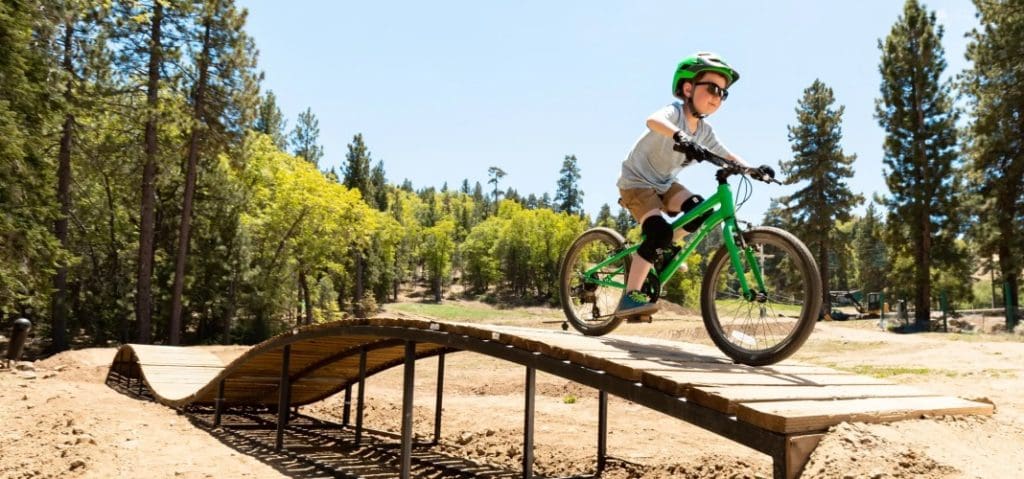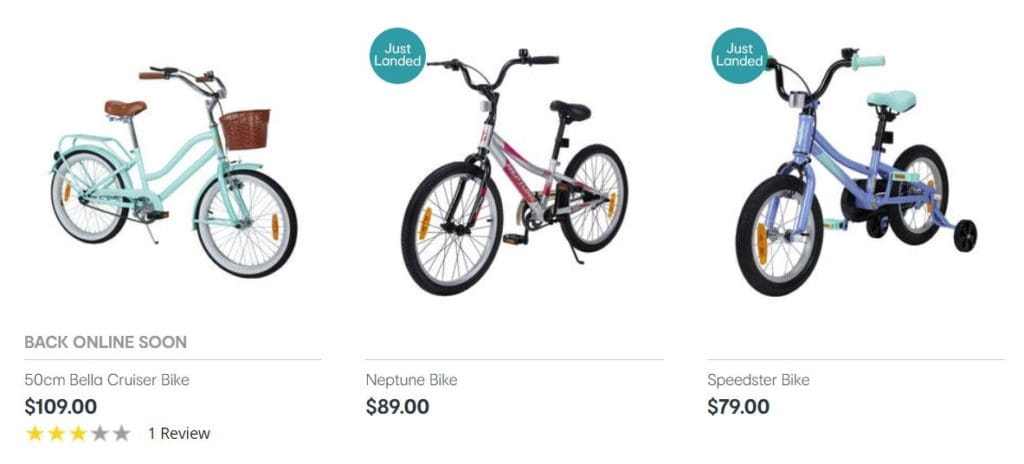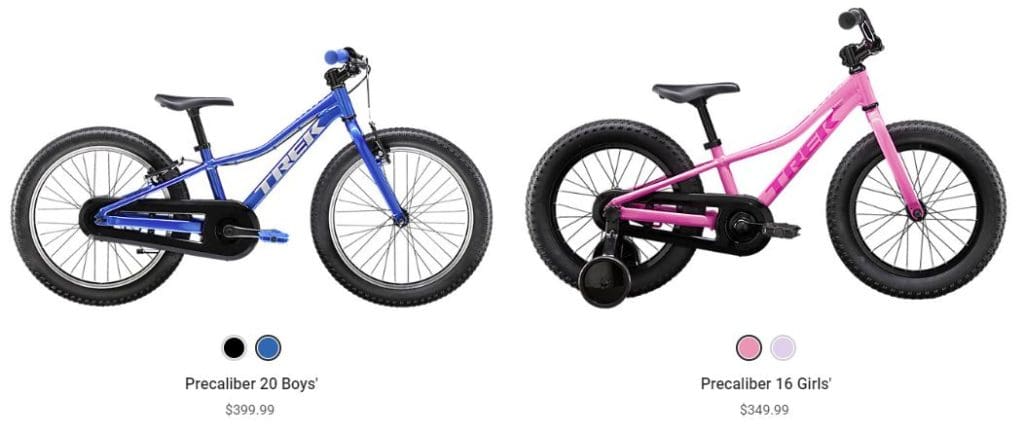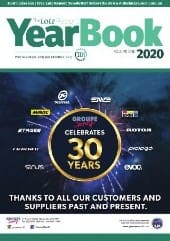Why Kids Bikes, BMX and Scooters Are So Important!

Dealer Guide to Kids Bikes, Scooters and Trailers
Over the years, if I’ve been in a bike shop talking to the owner and the subject turns to kids bikes, there’s often a deep sigh.
You only have to look at two of the photos accompanying this article to see the main reason for that sigh. On one hand you have K-Mart and the other mass merchants selling kids bikes for under $100. On the other hand, most dealer brand kids bikes for kids of the same age start at around $300.


I’ve just used a Trek photo for illustrative purposes, but that could have just as easily been Giant, Specialized or other leading dealer brands.
How can dealers compete in the kids market when they’re starting at least double the price if not more?
Should dealers even bother trying?
I would strongly answer that second question with a ‘Yes!’
But clearly, competing on price is not going to work. Most mass merchant bikes are built down to a price point, not up to a quality level. They often use bicycles as loss leaders to get customers into their stores where they can make bigger margins on P&A sales, or general clothing and other merchandise sales.
No dealer can match the mass merchants’ economies of scale, and of course mass merchant bikes are usually sold in a carton for customer assembly whereas dealer bikes are sold fully assembled – another significant cost to dealers.
So if you’re a dealer why should you bother with kids bikes? You might make 10 or more times the gross profit by selling a mid to higher end adult MTB, road bike or ebike that certainly does not take up 10 times more display space or take 10 times longer to build.
Unfortunately, I can’t give a single compelling answer about kids bikes giving an immediate boost to your bottom line.
But we know that if the child is given to opportunity to own and ride a dealer quality bicycle, they’ll have a better riding experience, fewer mechanical and durability problems and will be more likely to ride more, hopefully graduating to larger bikes as they grow older.
We also know that there are few things that match the joy of a child getting their first bike or scooter, not just for the child but hopefully for their family and even for the dealer.
Here are four more hard-nosed financial reasons to sell kids bikes, scooters and other kids products, albeit with a long return on investment.
- We need to introduce each new generation to cycling or else our adult bike market will gradually decline.
- You should consider the lifetime value of each customer. Many longstanding bike shops have often sold bikes to two or three generations of the same family. The joy of that first bike purchasing experience and positive memories of the bike shop stay with a child for life. I can still vividly remember the day almost half a century ago when I went to Bernie Jones Cycles in Adelaide to buy my first bike. (Which involved me contributing my entire life savings towards about half of the price… times were tougher back then!)
- Lifelong habits form at a young age and kids are also very persistent in persuading adults where to spend money. Why else does McDonalds spend a gazillion dollars marketing to kids?
- Although it would be difficult for a business to survive solely on selling kids bikes, scooters and related products, they form an important pillar of the business. For example in recent times, every store has seen families come in for a full set of bikes: mum, dad and however many kids. You need the kids bikes in order to get the full sale.
Hopefully you’re already stocking kids bikes and scooters, or this article is encouraging you to do so if you’re not. But if you can’t compete on price against the mass merchants, then what can you compete on?
Product Quality
You can’t just assume customers know this. You need to be able to give some good examples of what makes your bikes better. Ultimately you need to convince the customer that they’re not comparing ‘apples with apples’ and take price out of the equation.
Product Knowledge
You know how to sell the right size and type of bike for each customer. The 15 year old working in Kmart does not. But once again, you can’t just assume that you have the edge. Take a look at the kids’ bike pages on Kmart’s website. It’s very well presented and gives high quality product photos and descriptions. Likewise, their instore information including sizing charts is well thought out.
Service
Your potential customers need to know that not only will you sell the bike fully built, but that you’ll be there for follow up service and repairs.
Conclusion – Please Be Part of the Solution!
Australia is at the wrong end of the league table when it comes to childhood obesity rates. Government data shows that than one in four Australian kids is overweight or obese and that this proportion has been steadily rising for many years.
Physical activity levels are a strong predictor of obesity. Research also shows that childhood obesity directly links to adult obesity and all of the long term health impacts that flow from that.
Of course, it’s not bicycle dealers’ sole burden to look after the health of our nation, but it does help to know for sure that we’re part of the solution.
Next Month…
Our Annual Dealer Guide for September will be focused on Clothing & Helmets. Please contact us if you would like to highlight your Product or feature your Company in this edition.
Kids Product Distributors in Australia
The Latz Report YearBook lists any organisation that supplies goods or services to retailers, or interacts with them in some bike industry related way.
For summaries of kids product distributors, please follow this link to our Yearbook and use the Search function or Direct to Page option, to find:
- Clothing – Custom, Gloves, LeisureWear on Page 80,
- Clothing – Overshoes, Rain Wear, Sock, Technical Wear and Triathlon on page 81,
- Helmets on Page 84

